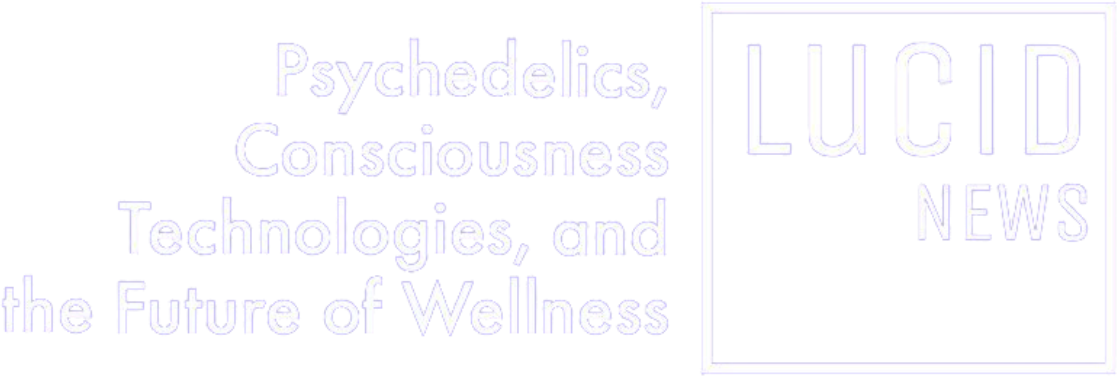What’s the Best Psychedelic Therapy Protocol? It’s Debatable.

Each month in Lucid News, Floris Wolswijk, the founder of Blossom, discusses hot topics for researchers in the psychedelics field. Blossom is your go-to place to find insights on the latest psychedelic research and the companies bringing new possibilities into practice.
Setting the Psychedelic Trip
What will psychedelic-assisted therapy look like when it becomes available? This is a hot debate within the psychedelics field.
One side, the maximalists, argues that psychedelic-assisted therapy needs much support. More than with any other medication, patients need to know what they are getting into. After treatment, integration requires more than just a debrief session.
The other side, the minimalists, argues that much less time investment might get us to similar outcomes. Patients don’t need to be burdened with repeated and expensive travel for multiple preparation sessions. They make a case for attendants that are present during a psychedelic session and leave the integration to the existing care network.
Two recent publications bring these different approaches to light. One, by Lea Mertens from the Central Institute of Mental Health in Mannheim and collaborators at the Charité Berlin and the MIND Foundation, describes the ongoing EPIsoDE trial, a phase II psilocybin trial for treatment-resistant depression. The other, by Neiloufar Family and colleagues from Eleusis, puts forward the Eleusis study design after gaining insights from a trial with LSD with healthy participants.
I spoke to both teams and found each had patient benefits top of mind. Though differing insights led the camps to design very different approaches.
Preparing the Participants
We have come a long way from the psychedelic research of the ’60s. Back then, participants were given little to no instruction about what to expect from a psychedelic experience. Some were even dosed without their consent.
Today a participant receives a lot of information about the many ways a psychedelic experience might unfold. The guidelines on how to conduct psychedelic research, written in 2008 by Johns Hopkins researchers Matthew Johnson, Bill Richards and Roland Griffiths describe the preparation as follows: “[A] series of meetings [totalling eight hours] between the monitors and volunteers in order to build rapport and trust. The relationship between the monitors and the volunteers should be well established by the time of the first session.”
Eleusis’ Family agrees with this assessment, saying: “The key in psychedelic therapy is to make the volunteer or the patient feel as comfortable as possible, which helps them surrender to the experience.”
But unlike the more protracted study protocols used by the MAPS, Usona, or EPIsoDE trials, Eleusis compressed the preparation to a single day before the dosing session. To make psychedelic-assisted therapy practical, Family asks, “What is required to make someone feel supported and free to let go in the session?”
In the Eleusis study, the participants (healthy volunteers) spent only a day at the location where their session was to take place. There was room to meet other participants, a guided breathing session, and communal meals throughout the day.
Will this be enough preparation for a patient population? Peter Hendricks, also associated with Eleusis, argues that we have a duty to find out: “The assumption has been that we need extensive preparation to maximize the likelihood of therapeutic mystical-type experiences, but this assumption has not been scientifically interrogated. I think the available data, including from the study that we’re discussing now, would suggest that therapeutic experiences are indeed possible with paired down preparation.”
Tripping Without the Therapist?
In a psychedelic-assisted therapy session, it is standard practice to have two therapists present, a male and a female. These are the same therapists with whom rapport is built over multiple preparatory sessions. The therapists serve as an anchor, but active intervention during the session is rarely necessary, according to the Johns Hopkins team. Speaking from experience, Johnson and colleagues note in the safety paper that “reassurance has been sufficient to handle all cases of acute psychological distress that have arisen.”
Psychedelic-assisted therapy was developed during an era when the prevailing approach was psychoanalytical. In the years since new frameworks have been developed, such as CBT and ACT, that are being applied during psychedelic sessions. Still, many researchers feel a prolonged experience with two therapists is necessary.
Shlomi Raz, founder and CEO of Eleusis, approaches psychedelic therapy from a humanistic perspective, following in the footsteps of Carl Rogers. “In this different kind of psychotherapy framework, it is more about experiential learning and unconditional positive regard.” Raz argues that you don’t need a psychotherapist to do that work. The Eleusis protocol calls for “attendants rather than therapists.”
Psychedelic-assisted therapy is usually an inward-directed experience. Those supervising a session, be it attendants or therapists, are instructed to intervene as little as possible. Further minimizing the need for a therapist, Raz argues: “Any talk during the acute phase to my mind is a negative thing in so far as it may reflect avoiding. Furthermore, you want to make this a consistent therapy. Thus we want to avoid the variability of what a psychotherapist brings in.”
That is not to say that Eleusis or other minimalists don’t care about safety. A monitor is present that can watch multiple rooms at the same time. The company has implemented escalation protocols, and is considering the addition of a proactive review of video recordings based on parameters such as movement in the room.
Reducing Trip Length
Another point of debate among researchers is the duration of the session. Most of the research done this century has been with psilocybin, meaning a session can take an entire day.
The Eleusis study used LSD, known for even longer psychedelic effects. Family comments on the experience of one of their study’s participants: “She received her dose of LSD at 9 am. She was still under the effects the next day at 1 am. It’s a very long experience for both the participant and the staff. Shortening the psychedelic experience is important to avoid burnout in your employees.”
Psychedelic companies have a multitude of reasons for shortening the psychedelic trip. For one, developing a novel psychedelic may enable them to patent the molecule and its specific use. But shortening the trip is also beneficial for the personnel, who would sit through shorter, though sometimes still intense, experiences, as well as for participants who would rather complete their trips more quickly.
Eleusis plans to deliver psilocin, the active metabolite of psilocybin, directly via an IV infusion. “If you’re going to do something, then just do it rather than ruminate, wait, anticipate and not know,” Raz suggests, referring to the predicted immediate onset of the drug effects in this method of administration. If their formulation, Ele-Psilo, works as intended, the entire trip is complete within an hour.
Whether that is enough time to process deep trauma or complex beliefs is an open question. From a psychoanalytical perspective, a patient might want to dive more deeply into past experiences. Could a shorter trip lead to long-lasting changes? Some companies are betting the house on it.
Integrating the Psychedelic Experience
Insight without action is like wanting to stop smoking while puffing on a cigarette. Integrating the psychedelic experience and applying the lessons to behavior change may be the most challenging and crucial part of psychedelic-assisted therapy.
Speaking about one of the biggest lessons learned over the past five years, Rosalind Watts, in a Medium article, highlights the need for integration. “People were flocking to psychedelic retreats, many had wonderful experiences, but most of them did not receive the kind of aftercare they needed. After such an intense experience, they found themselves left alone to understand it, process it, and try and incorporate the teachings into their lives. This is the work of a healing community, but after their brief taste of one, they found themselves back home treading the same old pavements and feeling a bit disconnected from their new ‘medicine family’ that they had shared the ceremony with. Now they were left alone with all the emotions, insights and questions the ceremony had revealed.”
Even when multiple integration sessions are offered, CIMH’s Mertens thinks that’s still insufficient. “In terms of the study visits, I believe we have to find a system where we even increase the integration amount we have right now in the trial.” She sees that many participants need more than the four offered integration sessions. “We need more psychotherapy around the psilocybin sessions in most patients, not all, but in most patients to actually induce change.”
Both Watts and Mertens speak to the necessity of participants having the space to discuss their psychedelic experience, especially regarding how to induce lasting change. Many participants in psychedelic-assisted therapy trials do not see a therapist regularly. Finding an appropriate therapist can prove difficult, as in Germany, where the EPIsoDE trial is taking place; the waiting times are months long.
Eleusis’ Hendricks challenges the prevailing narrative. “We don’t know for a fact that these integration sessions are necessary, at least not for everyone. And questioning this is relevant because, ultimately, if we want to see these treatments made available to a wide range of people, including people with less income who are at disproportionate risk for mental health conditions, we have to reduce the burden on participants.“
While trial participants are asked to visit their study site up to ten times, that level of therapy may not be possible for a large part of the population, Hendricks suggests. “In the Deep South of the U.S., public transportation is limited, especially in comparison to places like Seattle, New York, San Francisco, Boston, Washington DC, and others. Many cities are just not walkable, and many lower-income people have limited access to reliable automobiles. Reducing the number of sessions required to attend alone could make this treatment paradigm available to many more people.”
One of the trials that reignited the psychedelic renaissance was the smoking cessation trial. Published in 2014 by Matthew Johnson and colleagues, the study lists only one hour of integration after each session. Five years later, 60% of participants remained smoking abstinent. The insights from the psychedelic experience stuck without the researchers providing continued integration.
“My clinical anecdotal evidence to date would generally suggest that many people would benefit in the absence of extensive integration psychotherapy. They get the message loud and clear,” says Hendricks. Instead of offering a lot of guidance, he trusts that participants can have a self-healing experience. Though Hendricks is following in the footsteps of Carl Rogers, this framing might find overlap with those seeking to maximize psychedelic-assisted therapy. Can participants be trusted to follow their “inner healing intelligence” following an acute psychedelic experience?
Putting Psychedelics Into Practice
It may be unfair to pit the perspective of academic trials against the practical implications of the real world. But as different as these perspectives are, both the maximalists and the minimalists are dedicated to improving the lives of those they seek to serve.
Participant safety is front and center for both groups. The EPIsoDE trial offers a perspective on what the most rigorous scientific study of psychedelic-assisted therapy looks like. Results are expected by the end of 2023.
The answers aren’t all there yet, but Raz and colleagues ask the right questions. “Can we provide safety with an attendant with a minimal amount of psychotherapy and still see safety, tolerability and crucially effectiveness?” If yes, it could mean a more affordable and practical form of psychedelic drug therapy available for all who would like to pursue it.










